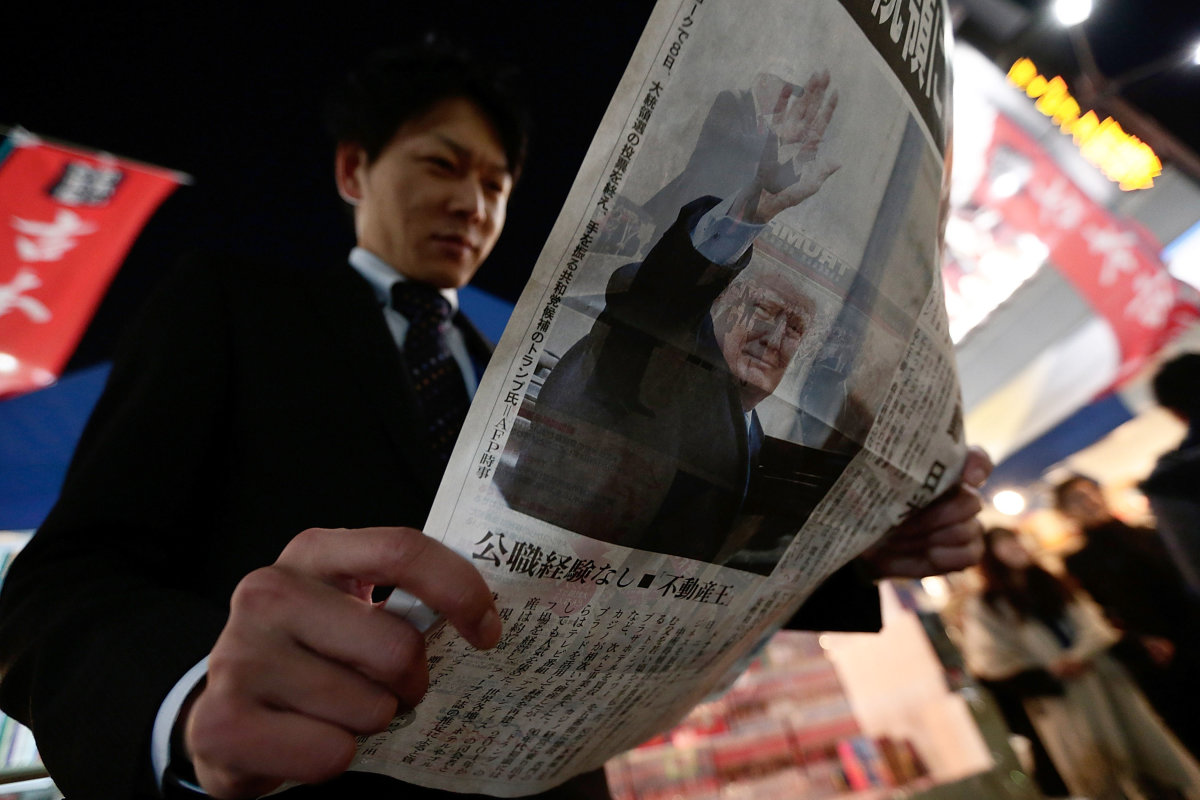AFP photo
By
Tom Arms
It is time to explain my hip thigh bone theory of the world.
The theory is based on the 1920s African-American spiritual “Dem bones, Dem Bones, Dem Dry Bones.” The ditty in turn was based on a Biblical passage in which a collection of dry bones reassemble themselves before the astonished eyes of the prophet Ezekiel .
The foot-tapping, hand-clapping spiritual is a roof raiser in evangelical churches around the world. It is also a popular song in young children’s anatomy classes.
But to my mind, its main value is as a perfect metaphor of how the rapidly shrinking and interconnected world has become increasingly dependent on its constituent parts (or bones) working together.
The hip thigh bone theory of the world has been languishing (disassembled) in my notebook just waiting for the right peg. It came this week during my weekly US radio broadcast.
Totally aware of the likely reaction, I bravely pointed out that millions of people around the world would be holding anti-Trump protests because it was the only way they could voice their distrust and dislike of the man. I was deluged with angry American callers insisting that foreigners had no right to protest and that they should “leave us alone and we will leave them alone”.
Well, I am sorry, but the world no longer works like that. And, what’s more it hasn’t for a very, very long time.
The world body politic has become totally interconnected. In fact, the bones that comprise the skeleton of our globe are not so much connected as fused and then overlaid with a complex web of nerves, muscles, sinews, international political and trade organs, ligaments and a protective skin of military alliances. In fact, it seems, that the only thing missing from this metaphor is a functioning brain.
The fact is that if you want iron ore for your steel mills it is best to have a quiet word with the Swedes or Canadians. If you need phosphates to fertilise the amber waves of grain or the fruited plain, it is best to be nice to the Moroccans. For tin cans think Africa and Australia. If you want a brick house you need sand—that probably means China or New Zealand. As for oil, well, just think of an unstable part of the world, smile nicely and thrust out a fistful of dollars.
America is not alone in its needs. Central and Western Europe are heavily dependent on Russian natural gas. Landlocked Bolivia depends on good relations with Peru and Chile to export and import its goods by sea. Oman and Iran together control the Straits of Hormuz and the entrance to the Persian Gulf, and the Vietnamese rice paddies are at the mercy of a China that controls the water flowing from the Himalayas.
The world is not just connected by trade and natural resources. The complex and interwoven financial structures that grease the wheels of commerce are increasingly important. There may be so-called national exchanges in London, New York, Hong Kong, Frankfurt, Tokyo and Dubai, but in our 24-hour world, all these exchanges now operate as one global trading floor fed with information from 24/7 global news operations.
Finally there are the overarching political connectors. At the top of the list is the much-maligned United Nations which currently has 100,376 personnel deployed on 16 different peacekeeping missions. The UN has 20 agencies whose responsibilities include fighting disease (World Health Organisation), helping to feed the world (Food and Agricultural Organisation), providing finance (IMF and World Bank), ensuring that telecoms work across borders (International Telecoms Union), and many more.
There are a host of other military, political and trade alliances which play their part in reducing tensions in order to create what is beyond doubt the most prosperous and stable world in history.
For a major country such as America – the world’s richest and most powerful and the one with the biggest stake in the existing structures–to withdraw from this world would be akin to tearing out the global backbone. And once disassembled, the bones of the world body politic will not magically reassemble as they did in the Book of Ezekiel, Chapter 37, verses 1 through 14.
Tom Arms broadcasts on world affairs and is editor of the free newsletter on forthcoming world news events Lookaheadnews.com. You can sign up for the newsletter at his website www.lookaheadnews.com
SIGN UP NOW FOR THE WEEKLY DIARY OF WORLD NEWS EVENTS AT WWW.LOOKAHEADNEWS.COM
LookAhead Radio World Report for week commencing 23 January 2017:



No Comments Yet!
You can be first to comment this post!